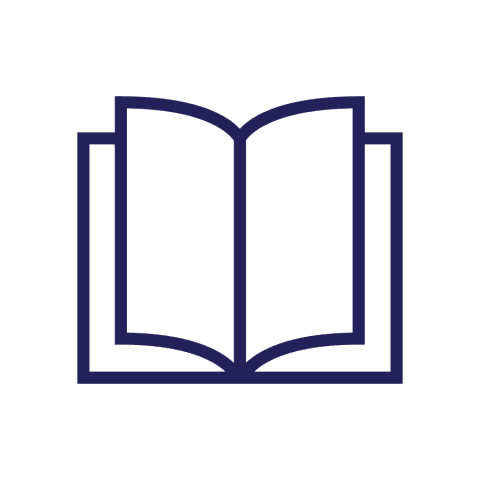Diane Ackerman’s work has been described as a history of her extraordinary enthusiasms. She has published books about gardening, psychology, and neuroscience, animals on the verge of extinction, working in a crisis-call center, learning to fly, cattle ranching, and a history of love. She has been awarded a coveted Guggenheim Fellowship, the John Burroughs Nature Award, and the Lavan Poetry Prize. She has been honored as a Literary Lion by the New York Public Library and has taught at Columbia University, the University of Richmond, and Cornell. She has even had a molecule—actually a sex pheromone in crocodilians that she researched and wrote about—named after her: the dianeackerone.
Born in Waukegan, Illinois, Ackerman received an M.A., M.F.A. and Ph.D. from Cornell University where she studied with Carl Sagan, the renowned astronomer and astrochemist. Her fascination with the natural world seems to stem from a desire to be a part of everything, to experience the world fully and intimately. And though she considers herself a poet first, her studies in science have informed all of her work, from her best-selling A Natural History of the Senses to her look at the brain and all its wonders in An Alchemy of Mind. “Not to write about Nature in its widest sense,” she says, “because quasars or corpuscles are not ‘the proper realm of poetry,’ as a critic once said to me, is not only irresponsible and philistine, it bankrupts the experience of living, it ignores much of life’s fascination and variety.”
First influenced by the likes of Wallace Stevens, Pablo Neruda, Dylan Thomas, Virginia Woolf and Colette, Ackerman has been equally moved by the naturalists John Muir, Loren Eiseley, and Peter Matthiessen. Her writing in turn reflects the scientist’s careful attention to detail, the observation of matter as it changes, the questioning of physical states as a mode of operation, coupled with the poet’s ear for language, the artist’s love for ecstasy.
Her most recent work, The Zookeeper’s Wife, tells the true story of Antonina and Jan Zabinski, zookeepers in Warsaw during World War II who saved hundreds of Jews and others from the Nazis. Ackerman uses the totality of her diverse background and skills in this unusual look at the Third Reich’s plan to control the genetic destiny of the planet. Carefully researched and constructed, Ackerman’s portrayal of Antonina Zabinska is deepened by the two women’s shared sensibilities and Ackerman’s own ability to immerse herself in the life of another. It is perhaps her most important work yet on science, history, courage, and love of life.
Ackerman lives with her husband, the novelist Paul West, in Ithaca, New York, where she takes in the outside world, walking for half an hour every day. “I put the whole planet under me,” she said. “The sway of my bones, of my hips, the blood-red maples, the feel of the breeze.” And when she travels the world, it is with great courage—rock climbing, biking, swimming with whales, learning to fly, and, of course, determining the sex of alligators.
Excerpt from The Zookeeper’s Wife (2007). . . Antonina had sometimes joined Jan to visit the famous entomologist Dr. Szymon Tenenbaum, his dentist wife Lonia, and their daughter Irena. As boys, Jan and Szymon attended the same school and became friends who loved crawling around in ditches and peering under rocks, Szymon a bug zealot even then. The scarab-like beetle became his sun god, specialty, and mania. As an adult, he started traveling the world and collecting in his spare time, and by publishing a five-volume study of the beetles of the Balearic Islands, he joined the ranks of leading entomologists . . . Even in the Ghetto, Szymon continued to write articles and collect insects, pinning his quarry in sap-brown wooden display boxes with glass fronts. But when Jews were first ordered into the Ghetto, Szymon worried how to protect his large, valuable collection and asked Jan if he’d hide it in the villa. Luckily, in 1939 when the SS raided the zoo and stole over two hundred valuable books, many of the microscopes, and other equipment, they somehow overlooked Tenenbaum’s collection of half a million specimens . . . It doesn’t really matter where the boxes sit [now, long after the war], but Szymon would have enjoyed this end-of-the-lane, out-of-the-way place, surrounded by farm fields and dense foliage askitter with insects, tiny beetles abounding . . . One often recognizes only in hindsight a coincidence or unlikely object that altered fate. Who would have imagined that a zealous professor’s cavalcade of pinned beetles would open the gate from the Ghetto for so many people?
Selected WorkThe Zookeeper’s Wife (2007)An Alchemy of Mind (2004)Cultivating Delight: A Natural History of My Garden (2001)Deep Play (1999)A Slender Thread (1997)The Rarest of the Rare (1995)A Natural History of Love (1994)The Moon by Whale Light (1991)A Natural History of the Senses (1990)On Extended Wings (1985)Poetry:Origami Bridges: Poems of Psychoanalysis and Fire (2002)I Praise My Destroyer (1998)Jaguar of Sweet Laughter: New and Selected Poems (1991)Reverse Thunder: A Dramatic Poem (1988)Lady Faustus (1983)Wife of Light (1978)The Planets: A Cosmic Pastoral (1976)Books for Children:Animal Sense (2003)Bats: Shadows in the Night (1997)Monk Seal Hideaway (1995)LinksAuthor’s website
